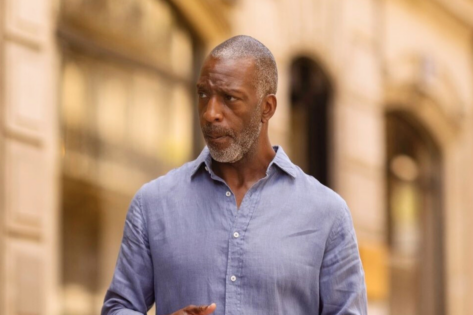A hyped-up track and field event, the brainchild of sprint legend Michael Johnson, kicks off in Jamaica, only for the stands to sit eerily empty during some events. Sounds like a nightmare for any sports organizer, right? Well, that’s exactly what happened at the Kingston event of Grand Slam Track. After the conclusion of the Jamaica leg of the event, this analyst isn’t holding back. He explains why the event failed in bringing the audience to the stadium. Let’s find out more.
Leighton Levy, editor at Sportsmax.tv and a seasoned track and field analyst, didn’t mince words. He
dissected the event’s major blunder. “At 5:30 p.m. on a Friday, most Jamaicans are just leaving work. And then there’s this incredible gridlock in the city on a Friday,” Levy explained. He even shared a tidbit from a former athlete who spilled the tea. “
She said she parked down by Hero Circle and had to take the shuttle to the stadium. By the time the shuttle got to the stadium, there were only two events left on Friday.” Ouch. Talk about a logistical faceplant.
And it didn’t get any better from there. Saturday rolled around, and the sun became the public’s number one enemy. “The factor of the sun immediately across from the grandstand where it burns into your look,” Levy said, painting a vivid picture. “When I ran at Champs, that was where Knox was situated for part of the time, and I didn’t like it because the sun was melting into your skin. As much melanin as we had, (it) wasn’t enough to protect you from what seemed like the sun coming through a magnifying glass. So nobody wants to sit there.”
Well, can we really blame them? Who wants to get roasted by the sun while trying to enjoy some world-class sprints?
Levy had more to say about the weather woes—he called out the scheduling like a coach yelling at a lagging runner. “The ideal time I suggested to her would have been 7, 7:30, which is where we saw the Jamaican International and Racial Grand Prix start,” he noted.
“And then there’s the thing on Sunday where you start the meet at midday—that does not work for Jamaican audiences at all.” His point? “The reality is that the timing wasn’t very suitable to the Jamaican audiences.” No kidding—midday on a Sunday sounds more like nap time than track time.
Then there’s the ticket pricing which Levy argued was a knockout punch to attendance. “The $60 entrance for the grandstand, and between $10 and $20 for bleachers. And of course, there’s another fee, $80 for tickets for certain parts of the grandstand, was prohibited for the average track and field fan,” he said.
The timing really couldn’t have been worse either as “…been coming out one week after Boys and Girls Championships, where they would have spent much of their disposable income at Champs because that’s the biggest event of the year,” he added. It’s like asking fans to sprint a second marathon just days after finishing the first—no one’s got the gas for that.
Levy’s breakdown makes it clear: if you’re bringing a shiny new track event to Jamaica, you better know your audience. Organizers need to consider everything—from traffic jams to the scorching sun. But what does Michael Johnson think about the opening events of Grand Slam Track?
Track and field legend Michael Johnson satisfied after opening Grand Slam Track
Sprint legend Michael Johnson expressed satisfaction following the debut of his Grand Slam Track series. The inaugural event concluded in Kingston, Jamaica, on April 6, 2025. The three-day meet at the National Stadium marked the launch of Johnson’s ambitious four-event circuit. Johnson designed it to revitalize interest in athletics beyond the Olympic cycle by showcasing top-tier runners, sprinters, and hurdlers.
Despite delivering high-quality performances, the event struggled to draw crowds. There were images of empty seats circulating online, prompting criticism on social media. Johnson, however, remained optimistic, focusing on the potential for growth as the series progresses.
The Grand Slam Track is the brainchild of a four-time Olympic champion. It will bring the world’s top athletes into more regular, competitive confrontations. While stars like Olympic champion Gabrielle Thomas, who dominated the long sprints, and standout Jamaican athletes impressed, the absence of top names such as Noah Lyles and Julien Alfred was noticeable.
Johnson confirmed that, with calls pouring in to race director Kyle Merber from athletes seeking to participate in future Miami, Philadelphia, and Los Angeles events. “His phone has been ringing fairly frequently, and that’s precisely what we want,” Johnson said, being optimistic about expanding the list.
The Kingston event concluded with several standout performances. Sydney McLaughlin-Levrone claimed victory in the long hurdles Slam, earning US$100,000. She secured the win by dominating both the 400m hurdles and the 400m flat. Johnson highlighted the series’ unique appeal, emphasizing its focus on elite competition.
Though organizers offered free tickets on the final days, attendance was still lackluster. However, he believes they have laid the foundation for success. “I’m confident that Grand Slam Track will go from strength to strength,” he stated, undeterred by the initial turnout. As the circuit moves forward, Johnson’s vision hinges on building momentum. He aims to capture a broader audience by leveraging the sport’s biggest stars to elevate its global profile.
The post Track and Field Analyst Slams Michael Johnson’s Grand Slam Track Over Major Blunder That Left Stands Empty appeared first on EssentiallySports.



